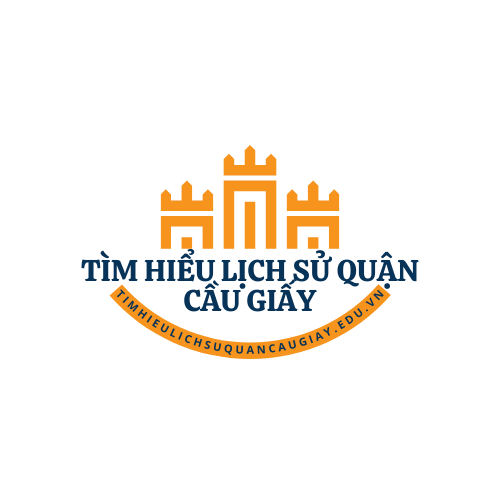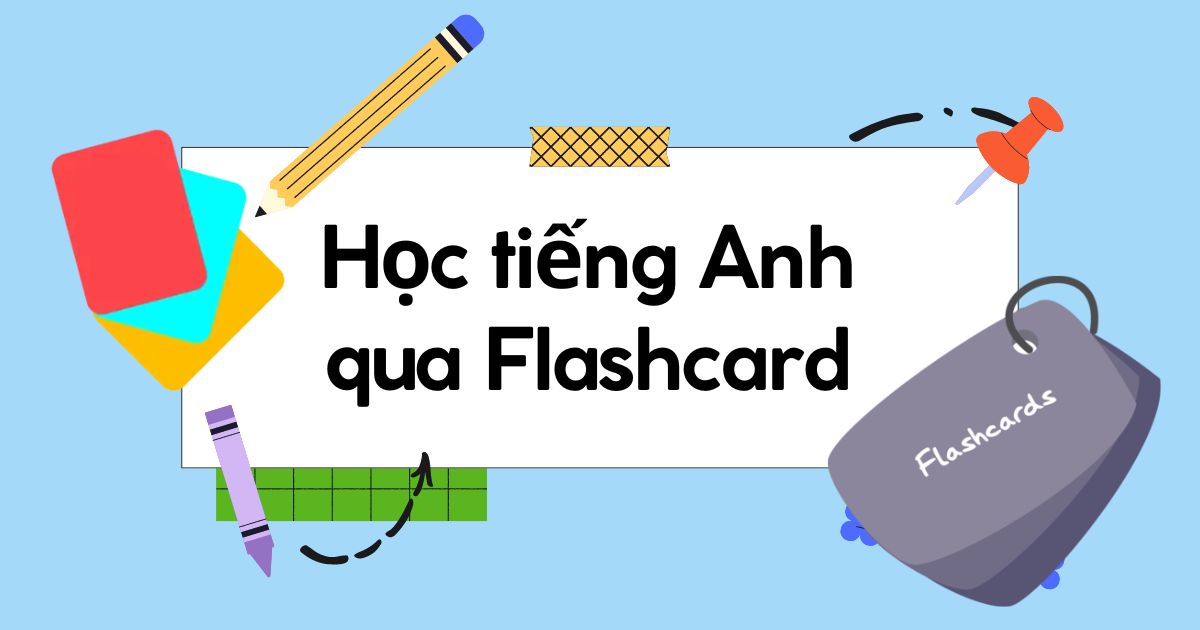- What are flashcards?
- Benefits of learning English through flashcards
- Subjects should learn English vocabulary through flashcards
- Instructions on how to learn English effectively through flashcards for children
- Create simple flashcards
- Divide into flashcard groups
- Use the iterative method
- Play games with flashcards
- Encourage practice
- Reviews and feedback
- Create flashcards
- The secret to teaching children to learn English through flashcards
- Some notes when learning English vocabulary with flashcards
- Learn English effectively for children through flashcards with timhieulichsuquancaugiay.edu.vn Junior
- Conclude
Learning English through flashcards is a fun and effective way for children to explore new languages. With vivid images and simple vocabulary, flashcards not only help children remember easily but also create excitement in learning. Therefore, to help children learn English effectively with this educational method, in the following content timhieulichsuquancaugiay.edu.vn will share some tips, let's refer to them now.
- Toán lớp 4 ki lô mét vuông là gì? Tổng hợp bí quyết và bài tập thực hành chi tiết
- Giải nghĩa vô tri là gì? Ngôn ngữ phổ biến của gen Z
- Budget là gì? Cách lập và quản lý kế hoạch ngân sách hiệu quả
- Sủi ma tiếng Thái nghĩa là gì? Ý nghĩa và cách dùng từ sủi ma
- Cách phát âm æ chuẩn | Phân biệt /ɑː/, /æ,/ /e/ cực dễ
What are flashcards?
Flashcards are a card-like study tool, usually with two sides: one side contains vocabulary, images or questions and the other side contains definitions, answers or related information. Flashcards are used to help learners remember knowledge effectively through repetition and review. They can be used for many different subjects, especially languages, helping to improve vocabulary and communication skills.
Bạn đang xem: Học tiếng Anh qua flashcard là gì? Cách học siêu tốc, hiệu quả và nhớ lâu
Currently, there are two popular types of flashcards:
-
Paper flashcards: These are traditional paper cards, easy to carry and can be created yourself or purchased. They are suitable for traditional learning and add fun to handwriting.
-
Electronic flashcards: An application or software on a mobile device or computer that allows users to create and use flashcards flexibly. Electronic flashcards often come with smart repetition features, helping to optimize memorization and review.
Benefits of learning English through flashcards
Learning English through flashcards is a traditional learning method, but is still widely used today thanks to benefits such as:
-
Enhance memory: Repeated learning through flashcards helps improve vocabulary and grammar memorization.
-
Active learning: Learners can create their own flashcards according to personal needs, encouraging interaction and creativity.
-
Save time: Flashcards allow quick and effective review, very suitable for busy people.
-
Easy to carry: Paper flashcards can be carried anywhere, while electronic flashcards can be used on a phone or computer.
-
Create excitement: Vivid images and intuitive learning help children and adults find learning more interesting.
-
Diverse learning methods: Flashcards can be combined with other learning techniques such as games and study groups, creating a richer experience.
-
Enhance communication abilities: Learning vocabulary through flashcards helps learners easily use them in daily communication.
-
Improve listening skills: Some electronic flashcard applications can integrate sound, helping learners pronounce more accurately.

Subjects should learn English vocabulary through flashcards
The method of learning English vocabulary through flashcards is completely suitable for many subjects, from beginners, working people, pupils, students… and will probably be most effective for children.
Because children often like to learn through images and games, flashcards with vivid designs will attract their attention. Furthermore, repetition through flashcards helps children memorize vocabulary naturally and happily, thereby building a solid language foundation.
In addition, this method of learning English through images not only helps children learn effectively but also creates interest in discovering new languages.
Instructions on how to learn English effectively through flashcards for children
Teaching English to children through flashcards is a fun and effective way for children, helping them discover new languages in a lively way. Therefore, to help children apply this learning method effectively, parents can follow these instructions:
Create simple flashcards
The first step is that parents can create flashcards for their children to learn English with appropriate vocabulary. You can start with simple words like colors, numbers, animals or objects around you.
For example, a color flashcard you might have the word “red” and a picture of a red apple next to it.
Or currently on the market there are also many sets of flashcards for learning English available, divided into many topics that parents can refer to and buy for their children to study to save more time.
See more: Collection of English flashcard sets for children by topic

Divide into flashcard groups
Next, classify the flashcards into different topics. This helps children learn in context, such as family, school or food. For example, in a family group, you might have words like “mother,” “father,” and corresponding images.
Use the iterative method
Then, set up a regular review schedule for your child. For example, you can set aside 10 minutes a day for your child to review the flashcards they have learned. This repetition helps children consolidate knowledge naturally.
Play games with flashcards
Turn learning into a game to create excitement for children. You can play a “word picker” game where your child chooses a flashcard and has to say the vocabulary on it. Or you can play the “guess the word” game by describing the word without saying it, letting your child guess.

Encourage practice
You should encourage children to use the new vocabulary they have learned in daily communication. You can ask your child to say simple sentences with new vocabulary, like “I see a red apple.”
Reviews and feedback
Please evaluate the learning progress of children learning English at home through gentle tests. For example, you can ask children questions like “What color is this?” (What color is this?) and see if the child can answer correctly.
Create flashcards
Finally, let your children create their own flashcards. This not only helps children remember better but also promotes their creativity. You can encourage children to draw pictures or decorate flashcards to their liking.

The secret to teaching children to learn English through flashcards
To improve effectiveness when teaching children English vocabulary through flash cards, parents can apply some of the following tips:
-
Take advantage of both sides: Parents should use both sides of flashcards to maximize learning. One side may contain vocabulary, while the other side may have images or definitions. This helps children connect words and meanings easily.
-
Change the order and position of the flashcards: Change the order and position of the cards regularly so your child doesn't memorize them in a rigid way. This also helps stimulate flexible memory ability.
-
Always carry flashcards with you: Parents can let their children keep flashcards in their backpack or bag, so they can review anytime, anywhere, from school to trips.
-
Sort cards and study according to the same topic: Instruct children to arrange flashcards according to certain themes, like family, animals or food. Learning by topic helps children easily remember and associate related vocabulary.
-
Study over and over again: Parents can spend time every day reviewing flashcards with their children, thereby helping children remember longer.
-
Make flashcard markers: Use markers or stickers to highlight keywords or images on flashcards. This helps attract attention and make the lesson more interesting.
-
View flashcards as a game: Parents can turn dry learning into a game to create excitement for children when learning a foreign language. Here, you can organize games like “pick the words” or “guess the words” with flashcards to let children participate and have fun in the learning process.
-
Use colorful flashcards: Use flashcards with many different colors to attract children's attention. Vivid colors will make learning more interesting and stimulate children's imagination.

Some notes when learning English vocabulary with flashcards
When teaching children to learn English through flashcards, parents need to pay attention to the following issues to ensure their child's learning process is smooth and effective:
-
Let children start with common words like family, house, animals… instead of macro topics about the universe, environment…
-
Combine illustrations to help children remember more easily.
-
Avoid cramming in too much information to avoid overwhelming your child.
-
Xem thêm : Giải đáp thắc mắc: Bằng PET có giá trị bao lâu và cách kiểm tra hiệu lực
Changing the way of learning such as pairing, guessing words or playing games helps your child not get bored and increases their ability to remember.
-
Encourage children to review flashcards every day.
-
Periodically check your child's learning progress to see how many words he or she has memorized.
-
When learning new words, encourage children to use vocabulary in sentences.
-
Make sure your child studies in a quiet space, free of distractions.
-
Children can draw pictures or choose their favorite colors to make the flashcard more lively.
-
Encourage your child to note additional information or personal examples for each word, helping them make personal connections with the vocabulary.
-
Don't study for too long, the ideal time is 15-20 minutes each time to help your child focus more and not feel tired.
Learn English effectively for children through flashcards with timhieulichsuquancaugiay.edu.vn Junior
timhieulichsuquancaugiay.edu.vn Junior is an English learning application with a comprehensive learning path for children from 0 years old, helping children develop 4 important skills simultaneously: Listening, Speaking, Reading and Writing, with a learning path divided into 6 levels. (Level 0 and Level 1-5). Accordingly, timhieulichsuquancaugiay.edu.vn Junior applies many globally recognized early education methods, notably the Flashcard method following the model of Glenn Doman. This method helps children access vocabulary naturally through “taking pictures of whole words.”
In particular, timhieulichsuquancaugiay.edu.vn Junior chooses to apply Flashcards in each lesson. Parents can find the Flashcard section after the Multisensory game + review game or Slideshow + review game for English-American languages and right after the Multisensory section for other languages.
timhieulichsuquancaugiay.edu.vn Junior applies the Glenn Doman method with the following content standards:
-
The words in the lesson belong to the same topic.
-
Font size is large and bold.
-
Images and videos are vivid and attractive.
-
Each image and word stands alone, without additional images to avoid causing interference when children “take pictures of whole words”.
-
Systematic repetition of learning content.
-
Card swapping time is fast, a maximum of 1 second to increase children's concentration ability and stimulate brain development.
In particular, the program is personalized according to each child's level and awareness, promising to bring an interesting and effective learning experience. In addition to using Flashcards, timhieulichsuquancaugiay.edu.vn Junior also combines many other media such as comics, games, vivid videos, songs and conversations, helping children enjoy and easily absorb knowledge.
Download the timhieulichsuquancaugiay.edu.vn Junior app now to explore Flashcard learning and many other early education activities!
Conclude
Learning English through Flashcards is an effective and interesting method to help children access vocabulary naturally. By using vivid images and easy-to-remember vocabulary, Flashcards not only stimulate memory but also improve children's ability to concentrate. This is a useful tool in the English learning journey, helping children build a solid language foundation early on. Let's apply this method to bring children an interesting and effective learning experience.
Nguồn: https://timhieulichsuquancaugiay.edu.vn
Danh mục: Giáo dục

























![[GIẢI ĐÁP] Chứng chỉ IELTS có được miễn thi tốt nghiệp không?](https://timhieulichsuquancaugiay.edu.vn/wp-content/uploads/GIAI-DAP-Chung-chi-IELTS-co-duoc-mien-thi-tot-352x184.jpg)
Ý kiến bạn đọc (0)